Reviews
Why Artist Heidi Norton’s Enigmatic Wax-and-Mushroom Monolith Contains Secrets Worth Sticking Around For
Our national art critic gets up close to Norton's Plants Grow Through It, now on view at Sargent's Daughters.
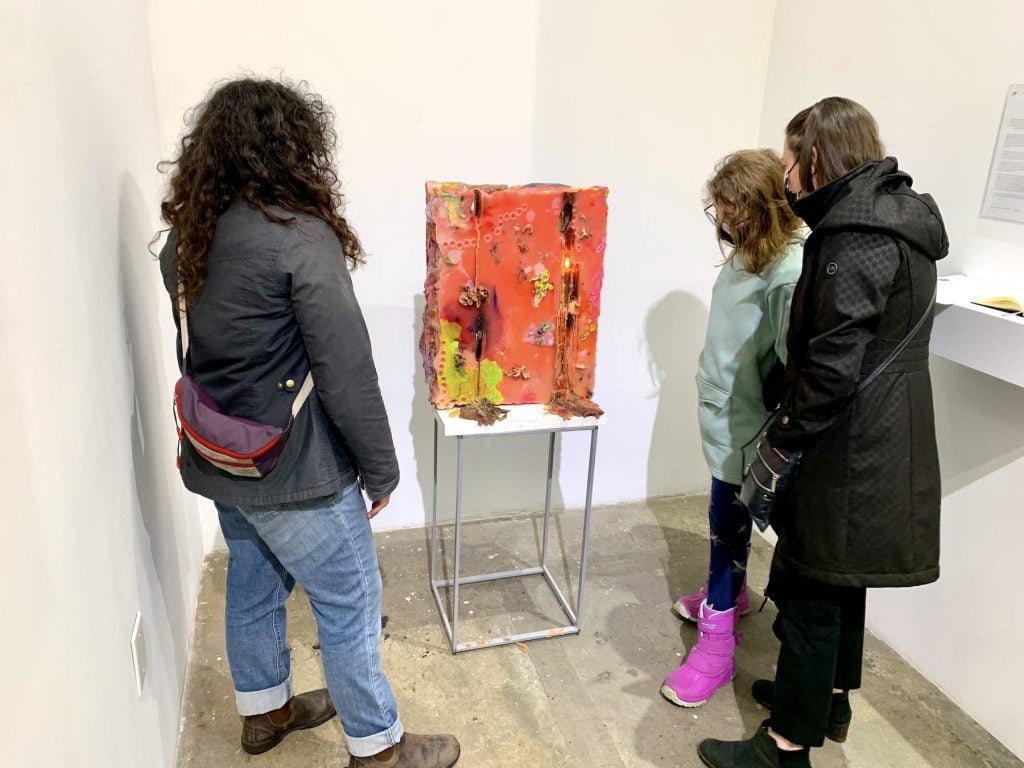
Our national art critic gets up close to Norton's Plants Grow Through It, now on view at Sargent's Daughters.

Ben Davis

I stopped by the New York gallery Sargent’s Daughters on a Thursday evening recently, and was excited by this sculpture in its fine group show, “The Palm-Wine Drinkard.” It’s by Heidi Norton, and it’s called Plants Grow Through It.
I’m not sure whether what engages me about it so much comes through in the photograph. It’s small; a tabletop monolith made of wax, deliberately pockmarked and marbled through with hints of different colors, like the shadows of things suspended inside. Some mysterious objects stud its surface.
Some of these prove to be little clusters of mushrooms, half submerged in the wax, struggling to rise out.
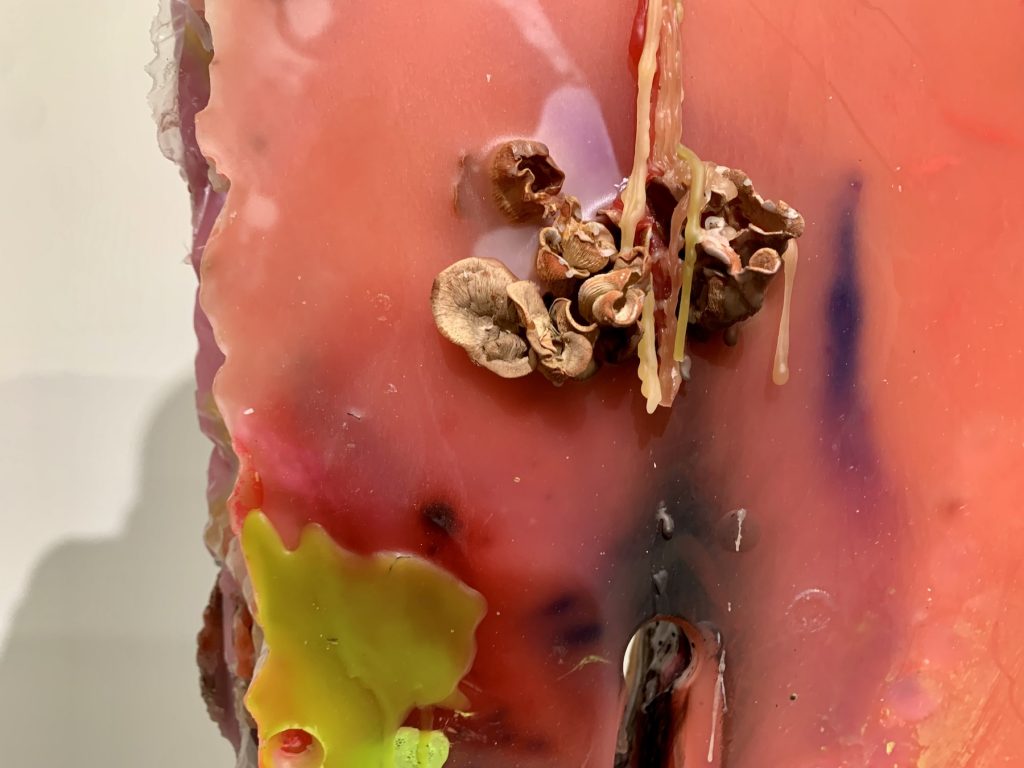
Detail of Heidi Norton, A Plant Grows Through It (2021). Photo by Ben Davis.
I think part of the effect comes from seeing the work at a distance, and then coming up close. From across the room, it looks like a slightly melted plastic slab in all these unnatural sherbet colors; some splashes of gack green contrast with the hot colors and suggest the industrial. It has the presence of a found thing, and a lack of fussiness which you could almost call indifferent.
But when you get closer, it feels alive. Partly, this is because it is very literally animated: little hollows contained lit candles during the opening. You could see the flame glowing out, but what was going on only clarified when you saw how the heat from the flame was eating the sculpture out from inside. Little rivulets of living wax formed, pulsating, pooling down the front of the sculpture.
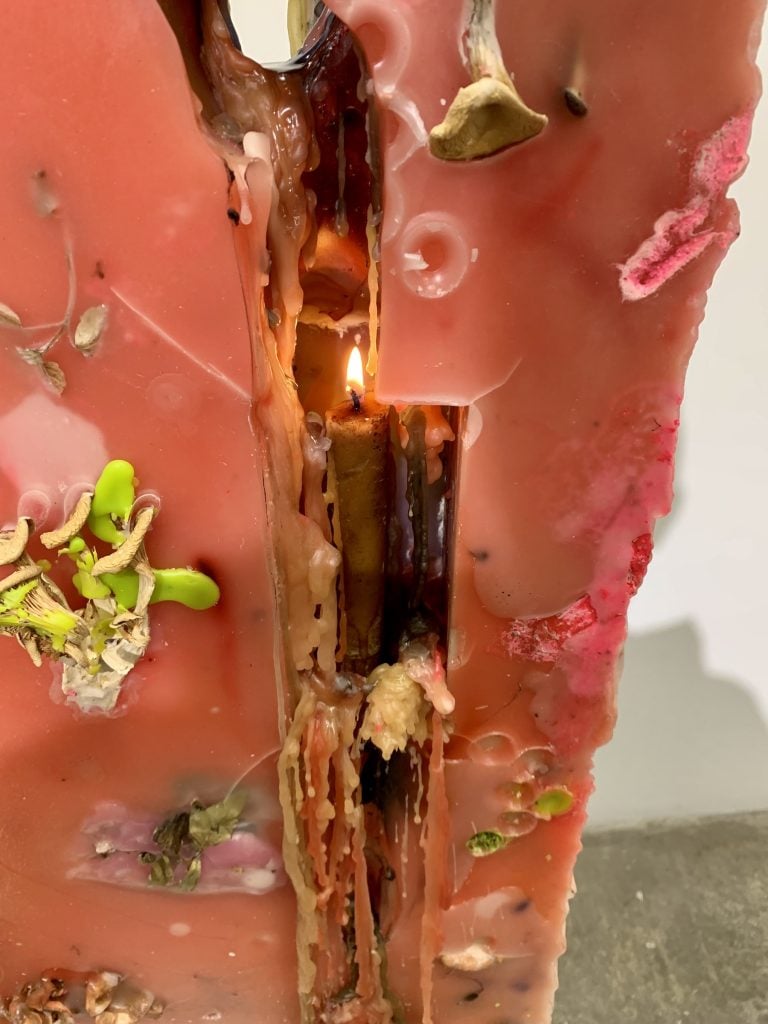
Detail of Heidi Norton, A Plant Grows Through It (2021). Photo by Ben Davis.
The effect is subtle, unspectacular—brainy, really.
If you view Plants Grow Through It from the side, it looks like a cross-section of mutant geology, with different layers visible: orange, peach, pink, finally a sudden layer of matted dirt on its back side (or what served as its back side in its installation at Sargent’s Daughters).
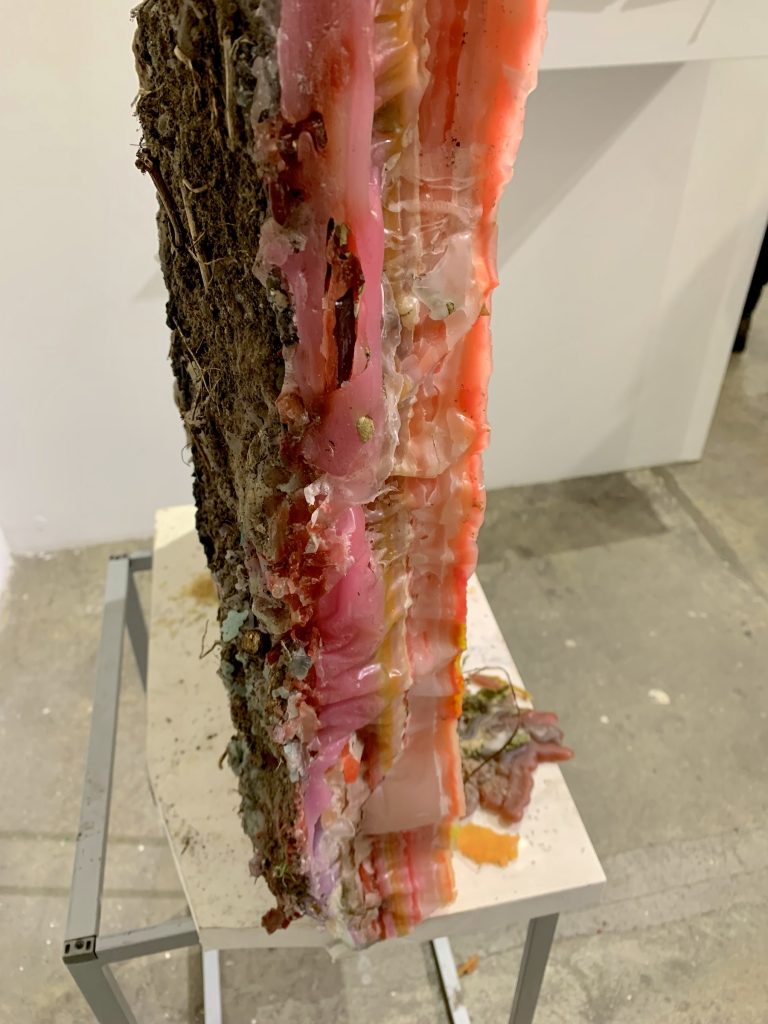
Detail of Heidi Norton, A Plant Grows Through It (2021). Photo by Ben Davis.
I ended up thinking that Plants Grow Through It is a work about layers, or about the layering of different kinds of material but also different kinds of time. I know from reading about Norton that she’s an artist who thinks a lot about how humans categorize and compartmentalize the natural from the non-natural, human consumption from environmental concerns, even though these are part of one system. This work nicely evokes both a natural phenomena and a manufactured thing.
The fungi and the candle in the work both suggest time and change, introducing dynamism that takes you away from thinking of the sculpture in terms of permanence. But they also introduce a contrast of incompatible time scales: the tenacious slow persistence of the mushrooms versus the much more rapid work of the candle as it decays the wax around it, dueling it out in the same little world.
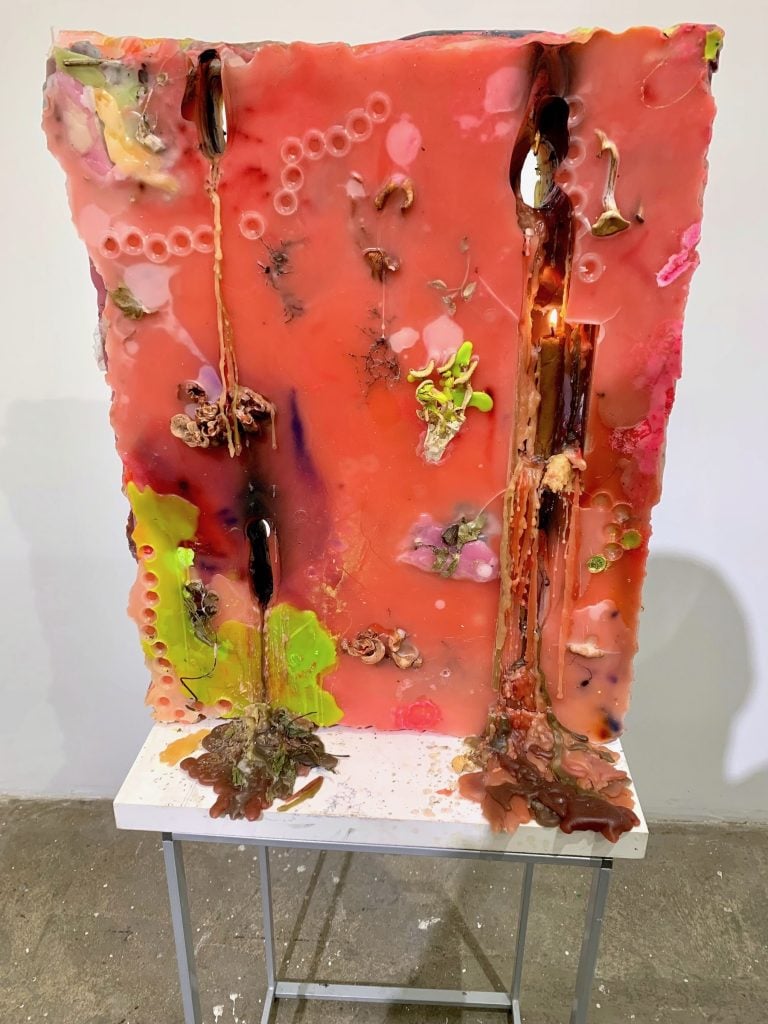
Detail of Heidi Norton, A Plant Grows Through It (2021). Photo by Ben Davis.
What equilibrium will the different elements of the work arrive at? Maybe none at all. It feels like you are watching a sculpture that’s thinking about its place in the world.